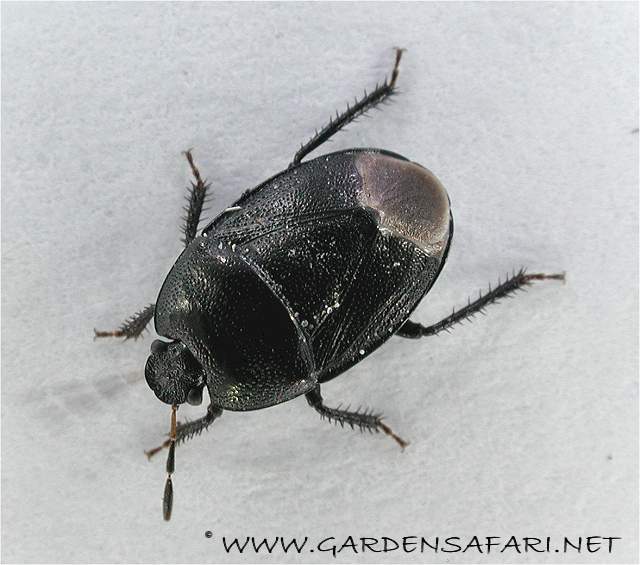Sehirus luctuosus
Sehirus luctuosus
Sehirus luctuosus
Sehirus luctuosus
Familie: Burrowing Bugs (Cydnidae)
The gender Sehirus is comprised of very few species in Britain. Even though these species are quite similar, it is easy to tell them apart. Look for the following characteristics in Sehirus luctuosus: an all black bug, no hairs on the body, big thorns on the legs and the first three element of the antennae is yellowish. Sehirus luctuosus reaches a length of 5 to 7mm. The Sehirus species belong to a bug family called the Burrying Bugs or Burrowing Bugs. This family is comprised of dark bugs, which have a very rounded shape and are very similar to beetles. That is mainly due to the fect that they lack the typical 'shoulders' of most other shield bugs. The antennae have 5 elements. The Burrowing Bugs bear a strong resemblance to black Dung Beetles. Take care you do not make that elementary mistake! The Burrowing Bugs live on or in the ground mainly. They usually suck on the top part of the root of the foodplant. Often they dig themselves in the ground to do so. That is one of the reasons these bugs are less frequently seen. Most species are around 8mm in length.
The eggs are being laid in spring. First larvae are crawling about in June and larvae may be seen till the end of August. The first adults appear in July. It is the adult overwintering. This species is known to love the Wood Forget-me-not, but it also sucks on other memebers of the Forget-me-not family. They are hard to find, for very well hidden indeed. Sehirus luctuosus prefers sandy soils, woodlands and heaths.

Familie: Burrowing Bugs (Cydnidae)
The gender Sehirus is comprised of very few species in Britain. Even though these species are quite similar, it is easy to tell them apart. Look for the following characteristics in Sehirus luctuosus: an all black bug, no hairs on the body, big thorns on the legs and the first three element of the antennae is yellowish. Sehirus luctuosus reaches a length of 5 to 7mm. The Sehirus species belong to a bug family called the Burrying Bugs or Burrowing Bugs. This family is comprised of dark bugs, which have a very rounded shape and are very similar to beetles. That is mainly due to the fect that they lack the typical 'shoulders' of most other shield bugs. The antennae have 5 elements. The Burrowing Bugs bear a strong resemblance to black Dung Beetles. Take care you do not make that elementary mistake! The Burrowing Bugs live on or in the ground mainly. They usually suck on the top part of the root of the foodplant. Often they dig themselves in the ground to do so. That is one of the reasons these bugs are less frequently seen. Most species are around 8mm in length.
The eggs are being laid in spring. First larvae are crawling about in June and larvae may be seen till the end of August. The first adults appear in July. It is the adult overwintering. This species is known to love the Wood Forget-me-not, but it also sucks on other memebers of the Forget-me-not family. They are hard to find, for very well hidden indeed. Sehirus luctuosus prefers sandy soils, woodlands and heaths.



